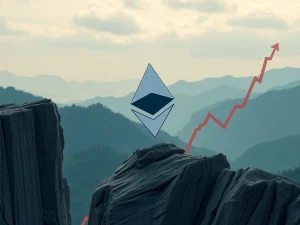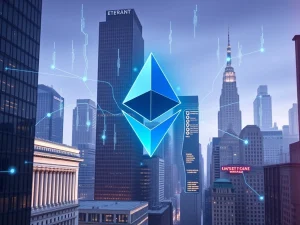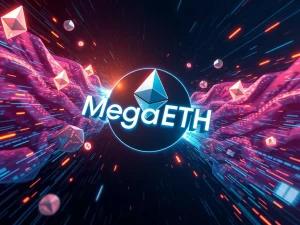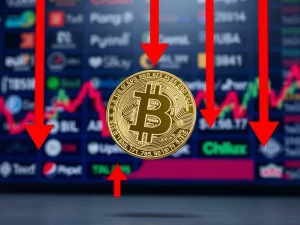Ethereum Gas Fees Plummet: Network Thrives Amidst Record Activity
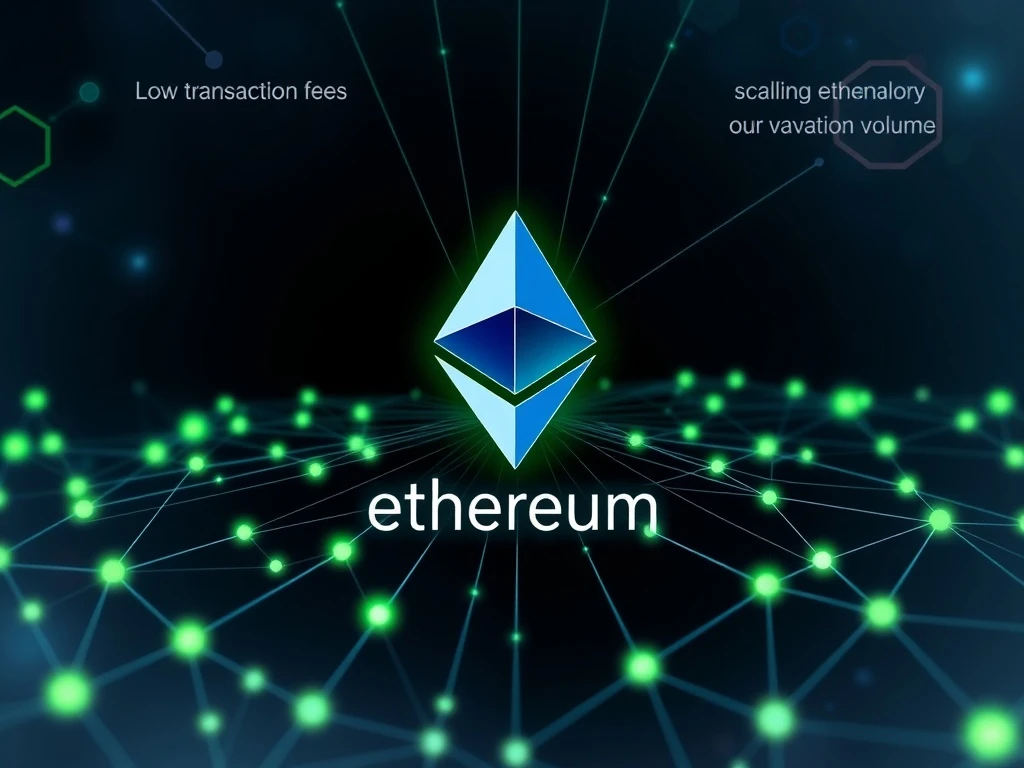
For cryptocurrency enthusiasts, the state of Ethereum gas fees often dictates interaction with the network. Historically, high fees presented a significant barrier. However, a remarkable shift is underway. Despite a surge in daily transactions, reaching over 1.6 million, Ethereum’s network costs remain incredibly low. This development signals a new era for the world’s largest smart contract platform, making it more accessible and efficient than ever before.
Ethereum Gas Fees Plummet: A New Era of Affordability
Ethereum transaction fees have reached near historic lows, defying expectations during periods of peak network activity. Data shows average fees hovering around 0.16 gwei, translating to approximately $0.01 per transaction. This affordability marks a significant departure from previous cycles. In the past, high demand often sent fees soaring, creating frustration among users. Today, the network demonstrates a robust capacity to handle increased traffic without compromising cost-efficiency.
Specific transaction types also reflect this newfound affordability. For instance, token swaps typically cost about $0.15. Non-fungible token (NFT) sales, a popular yet sometimes costly activity, now incur an average fee of just $0.27. These figures, reported by blockchain data aggregator Milkroad, underscore Ethereum’s improved infrastructure. Consequently, more users can engage with decentralized applications (dApps) and services without prohibitive expenses. This enhanced accessibility directly contributes to broader adoption and innovation across the ecosystem.
Unprecedented Ethereum Network Activity Fuels Growth
The low transaction costs coincide with a substantial increase in Ethereum network activity. On a recent Tuesday, daily transactions on the network surged to 1.6 million. This marks a near one-month high, a level not seen since early October before a significant market liquidation event. Such high transaction volume, coupled with stable, low fees, highlights the network’s enhanced scalability.
Furthermore, the number of active addresses on Ethereum has also seen a notable rise. According to crypto intelligence platform Nansen, active addresses peaked at a monthly high of 695,872 on a recent Saturday. This metric indicates growing user engagement and a healthy, vibrant ecosystem. Increased activity across various sectors, including decentralized finance (DeFi) and NFTs, drives this growth. The network’s ability to sustain high demand without fee spikes proves its readiness for advanced real-world use cases. This stability encourages developers and users alike to build and interact with the platform more confidently.
Dencun Upgrade’s Transformative Impact on Transaction Costs
The remarkable stability of Ethereum transaction fees can be largely attributed to recent, strategic network upgrades. The Dencun upgrade stands as a pivotal milestone in this journey. Deployed on March 13, 2024, Dencun introduced several key improvements. Primarily, it aimed to reduce transaction costs and expand throughput, especially for Layer-2 (L2) networks. This upgrade achieved significant success in its objectives.
Specifically, Dencun implemented ‘proto-danksharding,’ which introduced ‘blobs’ or temporary data storage for L2 transactions. This innovation dramatically lowered the cost of posting data from L2s to the mainnet. As a direct result, L2 transaction fees became significantly cheaper. In fact, reports indicate that Dencun made average Ethereum transaction fees cheaper by 95% a year after its deployment. This reduction has profound implications. It encourages more users to utilize L2 solutions, thereby offloading transactions from the main Ethereum blockchain. This strategic offloading alleviates congestion on Layer-1, contributing to overall network efficiency and sustained low fees.
Pectra Upgrade Further Enhances Ethereum Scalability
Following the Dencun upgrade, the Pectra upgrade further solidified Ethereum’s path towards greater scalability and affordability. Deployed in May, the Pectra upgrade built upon Dencun’s successes. Its primary focus was to enhance the network’s capacity, particularly for Layer-2 solutions. The Pectra upgrade specifically doubled the blob capacity of L2 networks. This means L2s can now process and store even more data more efficiently.
Consequently, the Pectra upgrade has played a crucial role in cutting transaction fees on L2s by approximately 50%. This further reduction makes L2 transactions even more attractive and cost-effective for users. Moreover, by increasing L2 capacity, Pectra effectively served to offload more transactions from the mainnet. This dual benefit—lower L2 fees and reduced mainnet burden—reinforces Ethereum’s ability to handle high transaction volumes without experiencing prohibitive gas spikes. Both Dencun and Pectra upgrades collectively represent a significant leap forward in Ethereum’s evolution, demonstrating a commitment to a more scalable and user-friendly blockchain experience.
The Future of Ethereum Transaction Fees and Adoption
The current state of Ethereum gas fees and network performance paints an optimistic picture for the future. Sustained low transaction costs, even during periods of high demand, remove a major barrier to entry for many users and developers. This affordability makes a wide range of applications more viable. From micro-transactions in gaming to complex DeFi strategies, the reduced overhead costs stimulate innovation and broader participation. Consequently, we anticipate continued growth in both user base and application diversity on the Ethereum network.
This enhanced infrastructure positions Ethereum as a more competitive platform for enterprise adoption. Businesses considering blockchain solutions now face fewer cost uncertainties. The improved scalability, driven by the Dencun and Pectra upgrades, means the network can reliably support increasing demand. As a result, the ecosystem can better support the expanding needs of Web3 decentralization initiatives. This robust foundation is critical for Ethereum’s long-term success and its role in shaping the future of decentralized technology.
Analyzing Ethereum’s Robust Network Performance
The consistent performance of Ethereum, marked by low Ethereum transaction fees and surging activity, highlights the success of its developmental roadmap. The ability to process over 1.6 million daily transactions while maintaining fees at near-penny levels is a testament to the engineering prowess behind the network. This efficiency stands in stark contrast to previous periods when network congestion frequently led to exorbitant costs. The data from sources like Milkroad and Nansen consistently reinforce this positive trend.
Furthermore, the increased active addresses signal a healthy and engaged user base. This engagement spans various applications, from simple token transfers to complex smart contract interactions. The Dencun and Pectra upgrades have not only delivered on their promise of lower fees but have also created a more predictable and stable operating environment. As a result, developers can build with greater confidence, knowing that their applications will remain affordable and accessible. This reliability is crucial for attracting new users and fostering a sustainable ecosystem. The network’s current state demonstrates its maturity and readiness for significant future expansion, solidifying its position as a leading blockchain platform.

